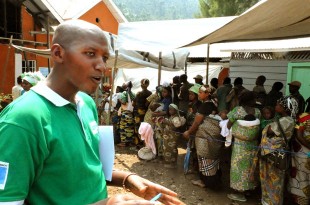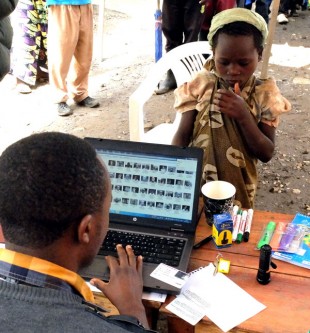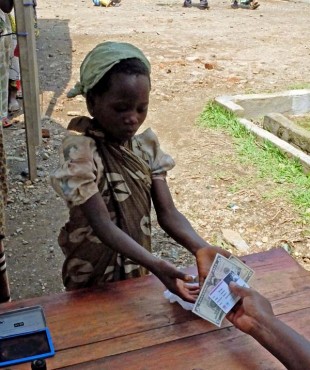Cash transfers are an increasingly important component of DFID’s poverty-reduction tool kit. There is strong evidence that they are a highly effective means to support extremely vulnerable and poor people. Cash transfers can help people to recover from shocks caused by natural disaster or conflict, and also have a broader impact on the local economy (through an injection of cash), and on the local political economy (by empowering poor people to make their own decisions about how to use their limited resources).
Cash transfers can also improve security for partners and reduce the risk of looting; reduce the logistical challenges for donors of getting goods into conflict-affected parts of the country; and tend to be more cost efficient than in-kind contributions. But cash transfers are not a panacea, and programmes need to make sure that local markets are strong enough to cope with an influx of cash, and that distributions are done in a way that does not put people receiving cash at risk from theft.

Last week I went to the town of Masisi in North Kivu – a 3 hour drive from Goma. I wanted to see the administration of a cash transfer programme managed by UNICEF and Concern Worldwide (and their partners Solidarite and MercyCorps) as part of the DFID-funded Alternative Responses to Communities in Crisis (ARCC) programme.
ARCC operates in areas of the Democratic Republic of Congo (DRC) with high humanitarian needs, piloting different approaches to cash programming. This is helping to gauge what works best in the DRC where the poor mobile phone network coverage means that mobile cash transfers are much more difficult than in other humanitarian contexts.
I wanted to see for myself the safeguards the programme has put in place to protect the money, and the people, receiving it. The trip also allowed me to see what impact cash transfers are having on the lives of some of the poorest and most vulnerable people who have suffered displacement as a result of the perpetual conflict in the east of the DRC.

I saw one element of the programme which involved distributing $15 to about 400 vulnerable internally displaced people (IDPs) in Masisi. The organisational efficiency of the programme was impressive, with well-established protocols to protect the money.
Vulnerable IDPs had been identified for support through a careful screening process and negotiations with the local community. The IDPs were then registered with photo-ID, logged on a computer and in a register. Each IDP could nominate an alternate (often a child) who was also registered through photo-ID on the system. Each IDP then presented their ID-card (which had added security through ultra-violet coding); was checked against the register; and then provided a thumb print as proof of payment on receipt of their $15.
These vulnerable members of the IDP community are given the $15 once a month as a kind of social security safety net – enabling them to buy basic provisions; cover rent; pay off outstanding debts, and pay for school fees.
The use of cash transfers in the complex humanitarian environment of the DRC is fairly well established. With our partners, DFID is investing time and effort in research and evaluation around different approaches and methodologies to better understand both the immediate impact, and the broader implications of the approach.
Later in the day I met representatives from a different cohort of the programme. These were women IDPs who had received a single cash payment at the outset of the programme – about $90. They had used this injection of cash to buy animals (pigs and sheep) to breed as a way to increase their income.

I am particularly interested to see the impact of the programme on the local economy (the multiplier effect of cash transfers); the impact on local power and political dynamics; the decisions that people take about how to use the money (short-term consumption versus longer term investment in economic assets); and about whether the programme improves the ability of participants to adapt to future shocks.
Giving money to poor and vulnerable people is a simple concept with far-reaching consequences for the recipients, the family and community they live in, and for the local economy. By reducing poverty and strengthening community resilience, it may also be an important component of our efforts to reduce conflict as well as poverty in the east of the DRC.
Keep in touch. Sign up for email updates from this blog, or follow Chris on Twitter.

Recent Comments